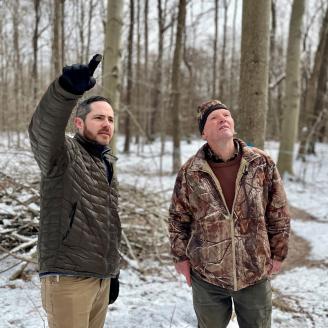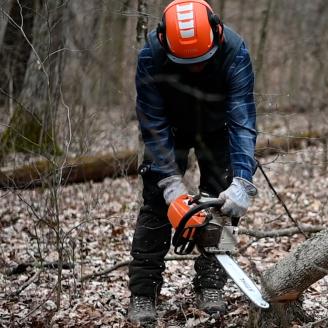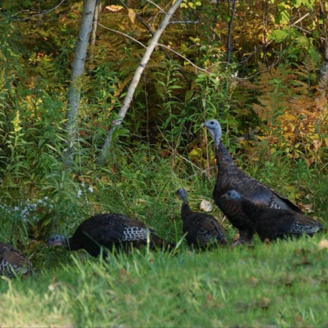Ohio Forestry
Silviculture is the theory and practice of managing a forest to maintain and enhance its productivity based upon the objectives of its owner and the ecological capabilities of the land.
Forests and woodlots are constantly changing. To get the most out of your property to meet your wildlife, recreational, aesthetic or economic goals, some type of regular management will be necessary. Getting the most out of your woods can be a challenge on your own. Fortunately, there are many resources available to help you.
Whether you are interested in wood products, wildlife, recreation, or scenery, proper management of your forest will help you achieve your goals and interests. If you haven’t been managing your woods, consider starting today.
Forest management is providing your forest with the care it needs to remain healthy and provide the benefits you desire. Forest management considers all parts of the forest community: soil, water, plants, animals, birds, and air, as well as the trees. The goal of forest management is a healthy, sustainable forest that accommodates any number of uses.
Common Ohio Conservation Practices

Forest Management Plan
An FMP is a site-specific plan developed for clients by a Technical Service Provider. The plan addresses one or more resource concerns on land where forestry-related conservation activities or practices will be planned and applied. Practices often included in an FMP are designed around the client’s objectives to address various natural resource concerns.
Benefits of a Forest Management Plan:
- Provides suggested activities to meet your forest objectives
- Guides long-term sustainable woodlands
- Plans out practices for program assistance
Complete a Division of Forestry Woodland Stewardship Management Plan (WSMP) and have it approved by an Ohio Department of Natural Resources (ODNR) Service Forester. The consultant may modify an existing plan or create a new one for a landowner. Ohio resident applicants are asked to complete the initial certification plan using the Ohio plan template.
Non-resident applicants may submit a plan that meets the Forest Management Plan (106) criteria listed in Section III of the eFOTG for initial certification; however, plans written for landowners participating in USDA programs must conform to the Ohio plan template, and the first plan will be reviewed by an ODNR Service Forester.

Forest Stand Improvement
Use of Forest Stand Improvement techniques help landowners manage species composition, stand structure, and stocking by removing selected trees and understory vegetation.
Benefits of forest stand improvement:
- Increase forest product quantity and quality, and restore natural plant communities
- Improve vigor; initiate forest stand regeneration
- Achieve desired crop tree stocking and density levels and increase carbon storage
- Reduce potential damage from wildfire, pests, and moisture stress
- Improve aesthetics, recreation, and wildlife habitat

Wildlife Habitat
Providing adequate food and cover for wildlife.
Benefits of improved wildlife habitat include:
- Increasing fruit and mast(nuts)
- Improving forest structure
- Increasing forest diversity for forest wildlife including ruffed grouse, deer, wild turkey, woodcock, songbirds, etc.
Tree/Shrub Establishment
Trees/Shrub establishment introduces woody plants to an area by planting seedlings or cuttings, direct seeding or natural regeneration. Once established, woody plants provide wildlife habitat, potential forest products, and long-term erosion control. They also improve air and water quality, sequester carbon, and enhance area aesthetics.
Benefits of tree planting:
- Provides wildlife habitat
- Protects soil from eroding
- Improves air and water quality
- Sequesters carbon
- Enhances the aesthetics of an area

